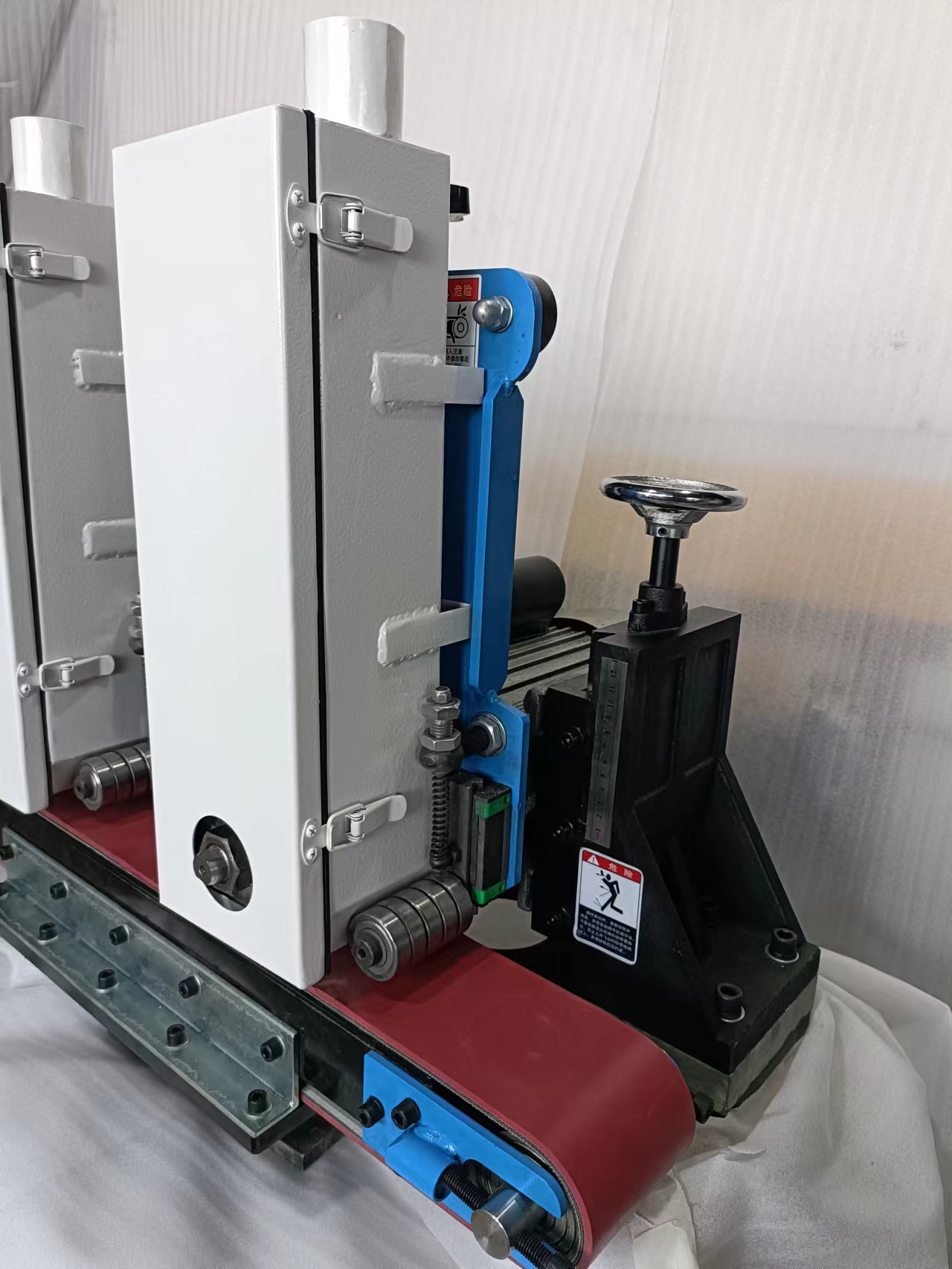In the realm of metal burr treatment equipment, selecting the appropriate power for your belt sander is a critical decision. This article delves into a detailed guide on how to determine the right power size:

**Step 1: Understanding Your Processing Needs**
To begin, it's essential to have a thorough understanding of your specific processing requirements. This encompasses several key aspects:
- **Material Type**: Identify the materials you will be processing. Different materials may necessitate different power levels. For instance, handling hard metals may require higher-powered belt sanders.
- **Workpiece Size**: Determine the dimensions of your processing projects. Smaller components may be well-suited for low-power machines, while larger workpieces may demand higher-powered ones.
- **Production Speed**: Define your production speed requirements. If high-yield production is a priority, you might need high-powered machines to enhance processing speed.
- **Processing Type**: Consider the nature of your processing tasks. Some applications may require rapid removal of surface irregularities, while others demand fine control and precision.
- **Budget Constraints**: Take your budget limitations into account. High-powered belt sanders are generally more expensive, so striking a balance between power and budget is crucial.
**Step 2: High-Power vs. Low-Power Machines**
High-Power Belt Sander:
- Ideal for processing large workpieces and achieving high-output production.
- Offers fast processing speeds, capable of swiftly removing surface irregularities and burrs.
- Typically requires more power supply and a larger working area.
- Suited for applications prioritizing efficiency and rapid processing.
Low-Power Belt Sander:
- Suited for fine processing and precise control.
- Operates at a slower speed but provides finer precision and minimal material removal.
- More suitable for smaller workpieces and low-yield production.
- Generally more budget-friendly, making them appropriate for constrained budgets.
**Step 3: Balancing Needs and Budget**
When selecting the right power for your belt sander, it's essential to strike a balance between your specific needs and your budget. Consider the following:
- **Material and Processing Type**: If you are working with hard materials or require rapid material removal, high-power machines are often the best choice.
- **Workpiece Size**: For larger workpieces, high-powered machines can expedite processing tasks, but ensure you have sufficient workspace.
- **Production Speed**: High-power belt sanders enhance efficiency for high-output production, while low-power machines offer better control.
- **Budget**: If you are working within budget constraints, you can explore low-power machines, ensuring they meet your processing requirements.
**Step 4: Testing and Consultation**
- Consider conducting practical experiments to understand how well the belt sander performs in meeting your specific needs.
- Consult with industry experts for their valuable input.
- Seek feedback from other companies and processing engineers to learn about power choices in similar applications.
**In Conclusion**
When choosing the appropriate power for your belt sander, it's important to explore various models and brands to ensure optimal performance and efficiency. Some belt sanders, like the ADV-118, offer a range of power options, making them an ideal choice for meeting diverse processing needs.


